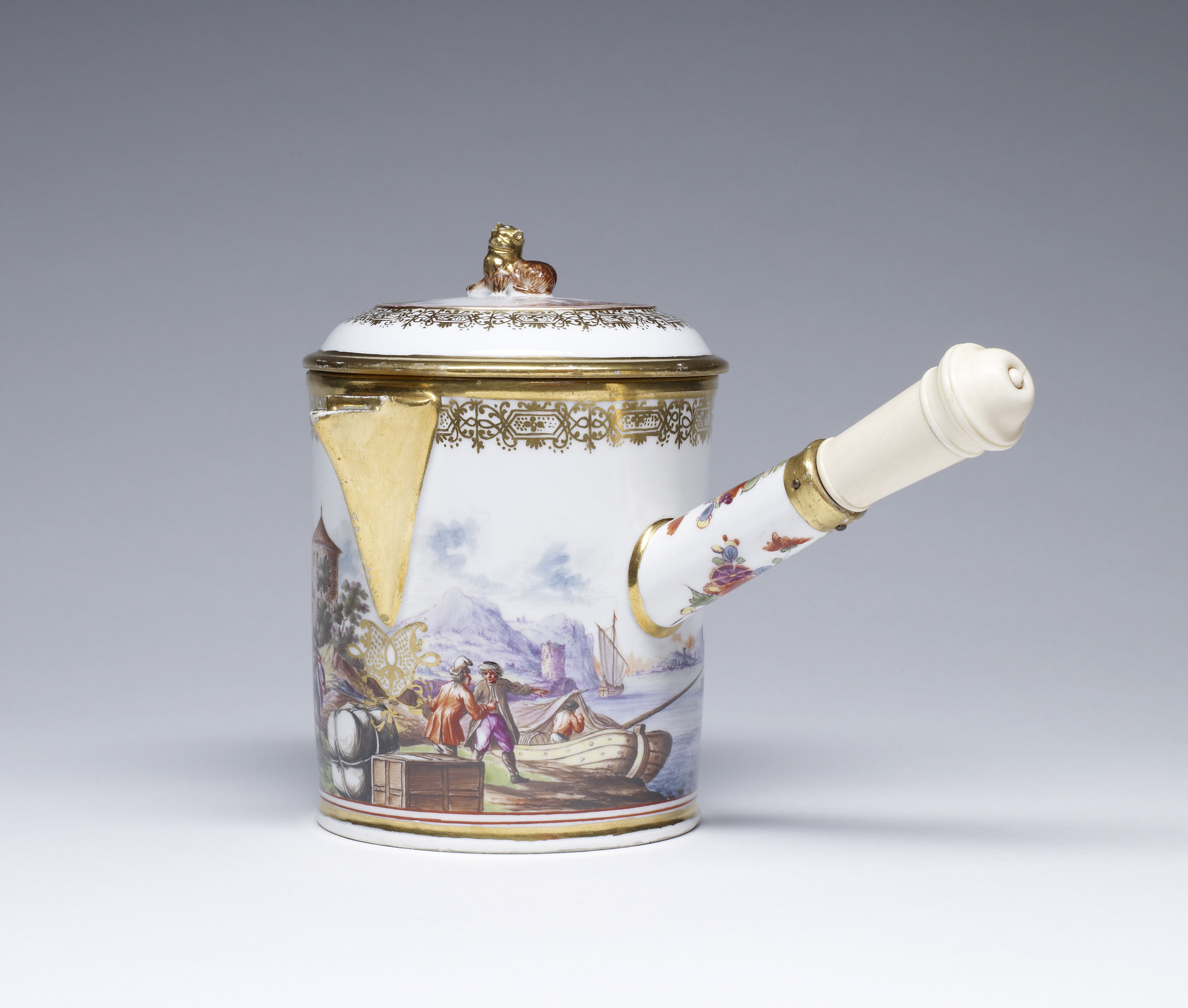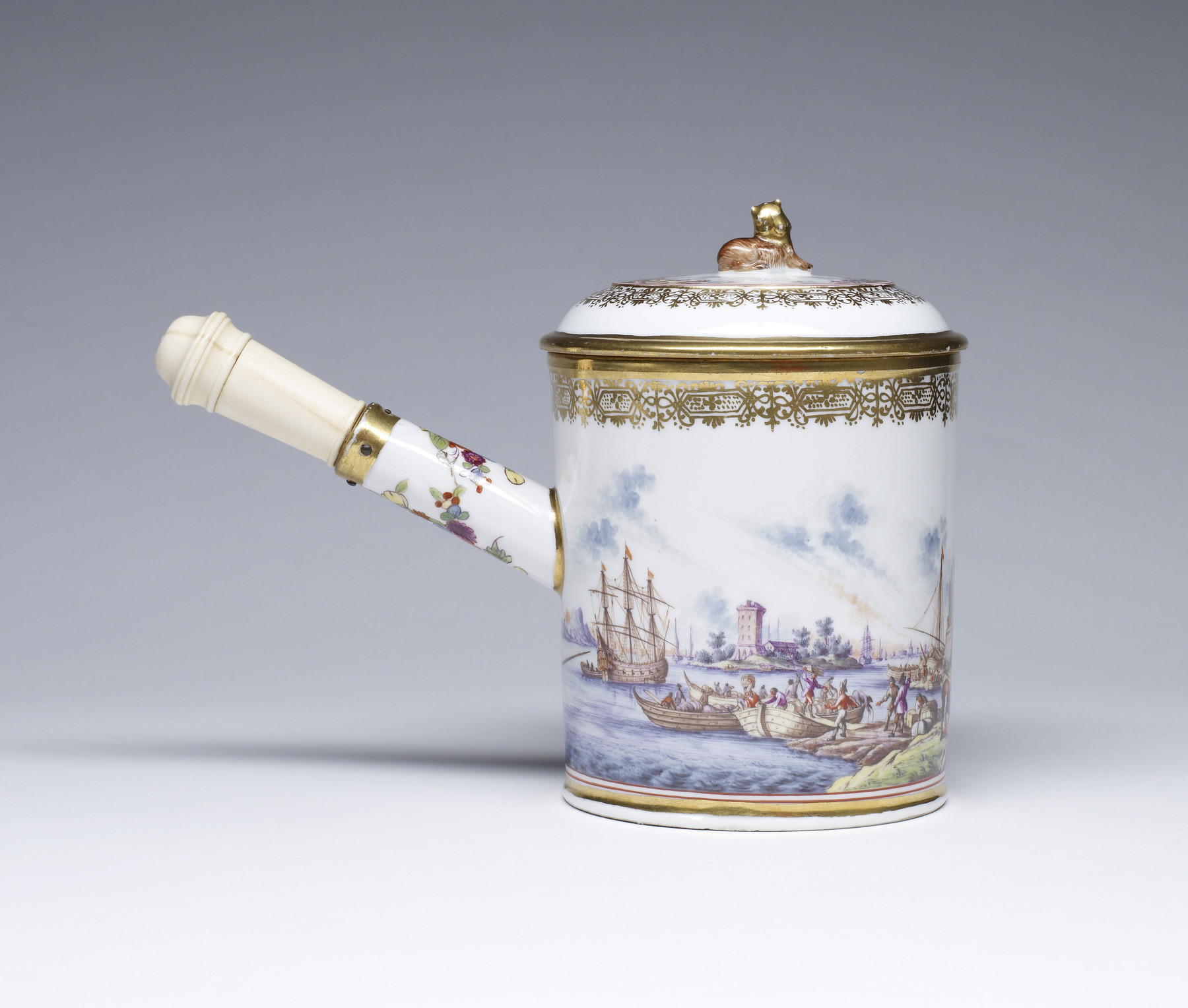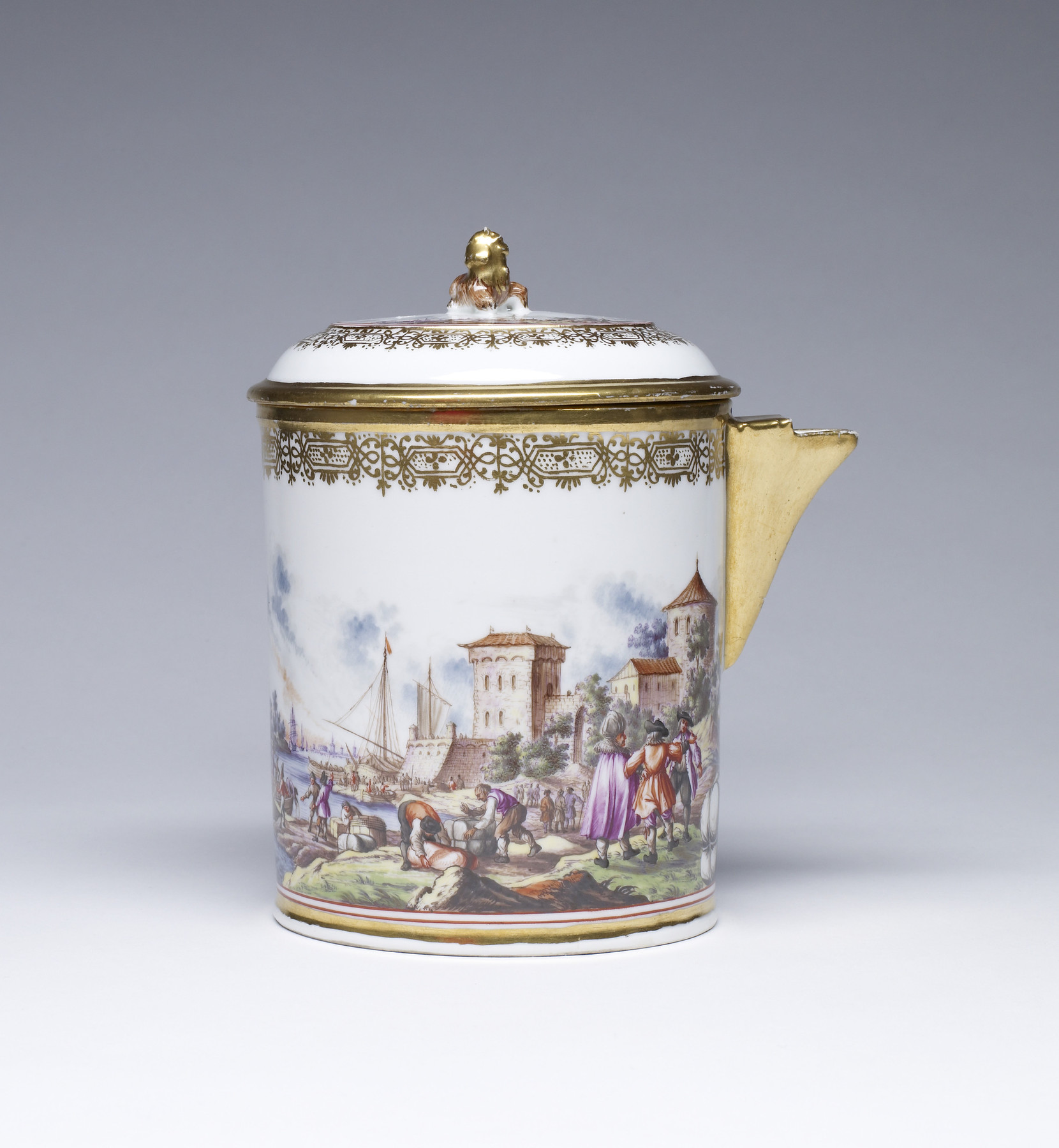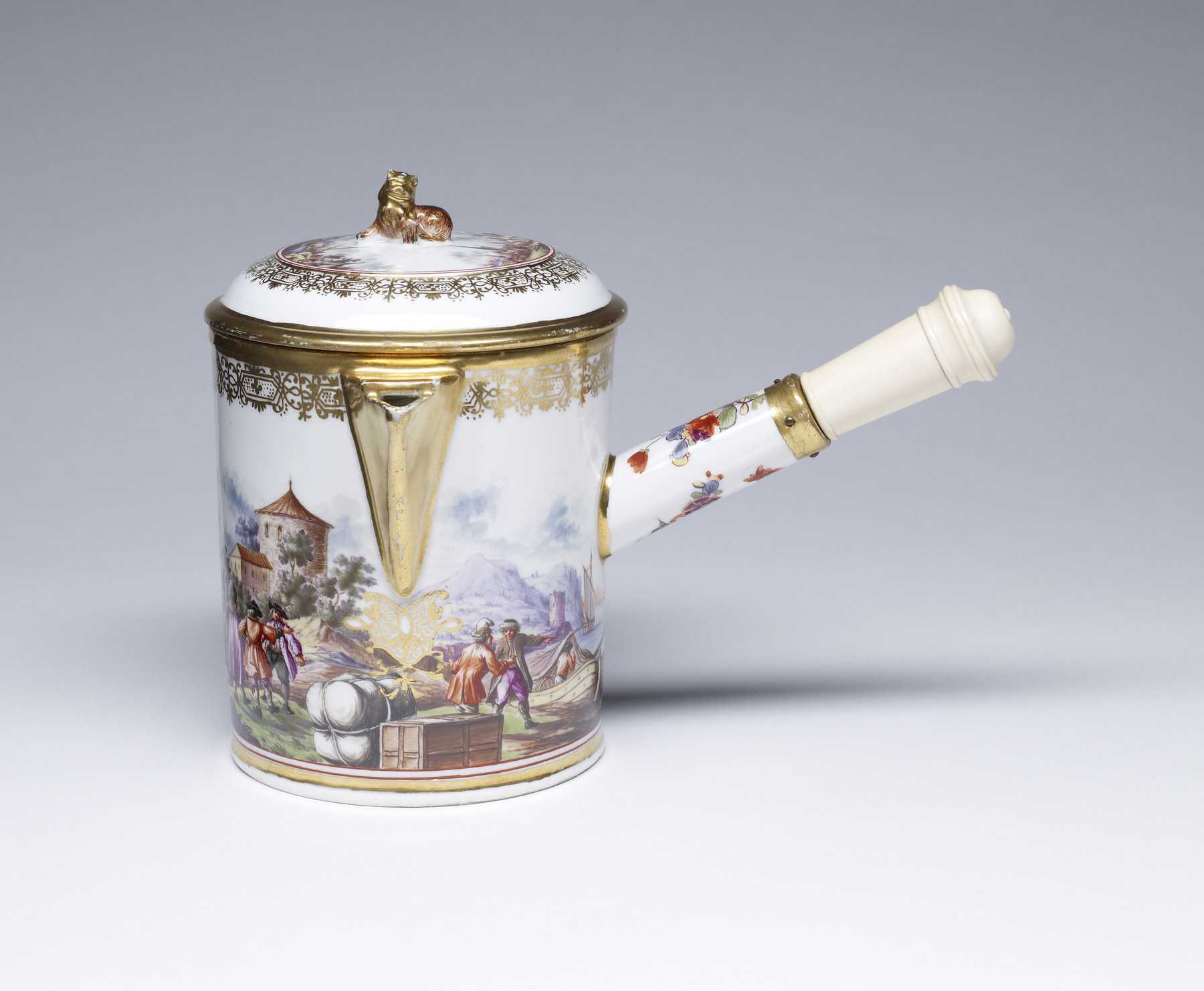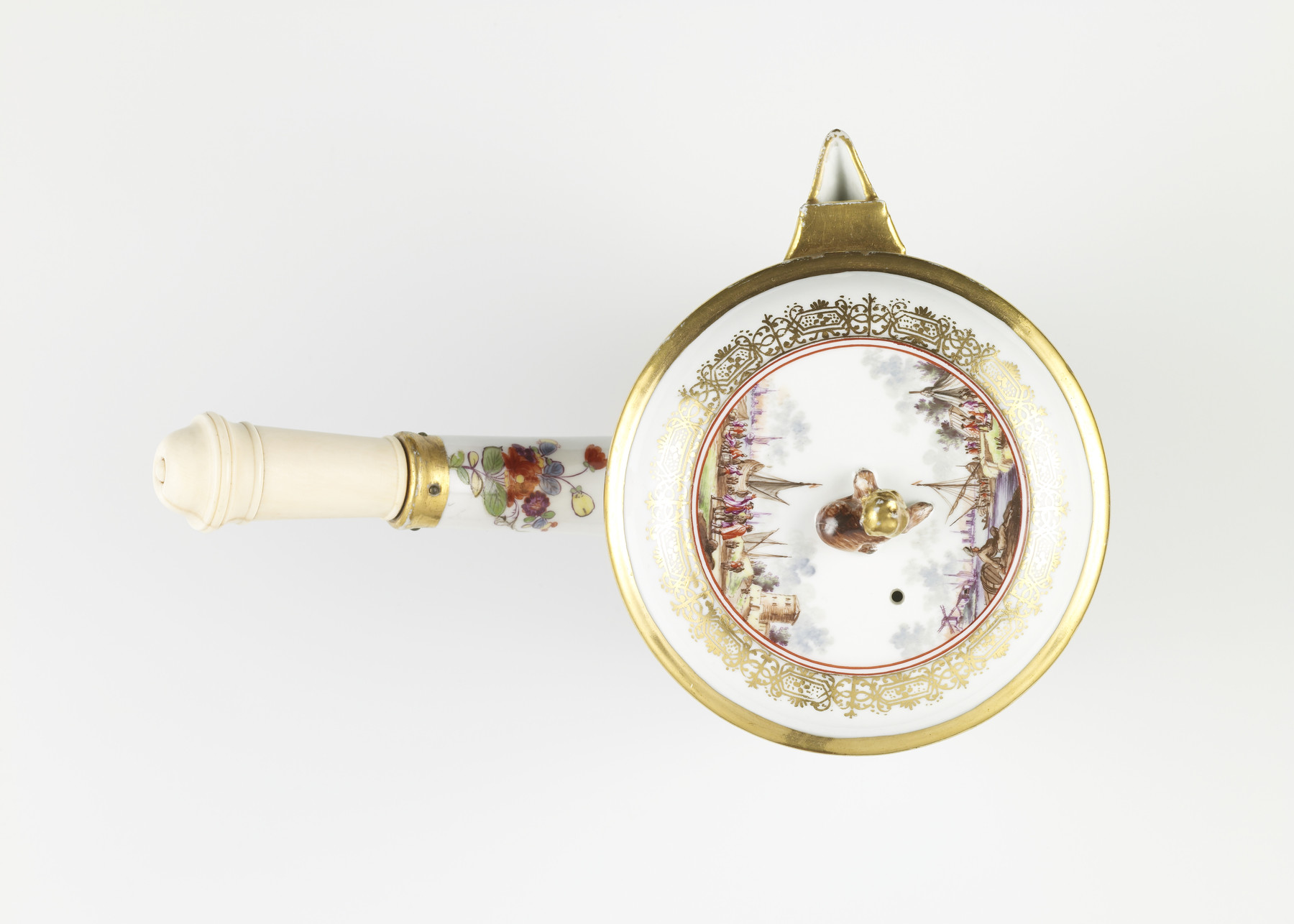Chocolate Pot
(18th and 19th Centuries )
Indigenous peoples in the Americas consumed products made from cacao beans and fruit as early as 1900 BCE. In the early 16th century, Spanish friars brought cacao from newly established colonies in South and Central America and introduced chocolate to the wealthy elite of Europe. Chocolate pots like this one were among the new types of tableware created to accommodate this luxurious hot beverage. The handle of this pot is made of ivory, which would have prevented the user from burning his or her hand.
The portside scenes painted on this chocolate pot make reference to the overseas trade that brought commodities like chocolate and sugar to Europe. They do not, however, allude to the forced labor of indigenous people and enslaved Africans that enabled the trade.
Inscription
Provenance
Provenance (from the French provenir, 'to come from/forth') is the chronology of the ownership, custody, or location of a historical object. Learn more about provenance at the Walters.
Acquired by Henry Walters, Baltimore; Walters Art Museum, 1931, by bequest.
Geographies
Germany, Meissen (Place of Origin)
Measurements
Overall with lid: H: 6 7/16 in. (16.4 cm)
Credit Line
Acquired by Henry Walters
Location in Museum
Not on view
Accession Number
In libraries, galleries, museums, and archives, an accession number is a unique identifier assigned to each object in the collection.
In libraries, galleries, museums, and archives, an accession number is a unique identifier assigned to each object in the collection.
48.911


